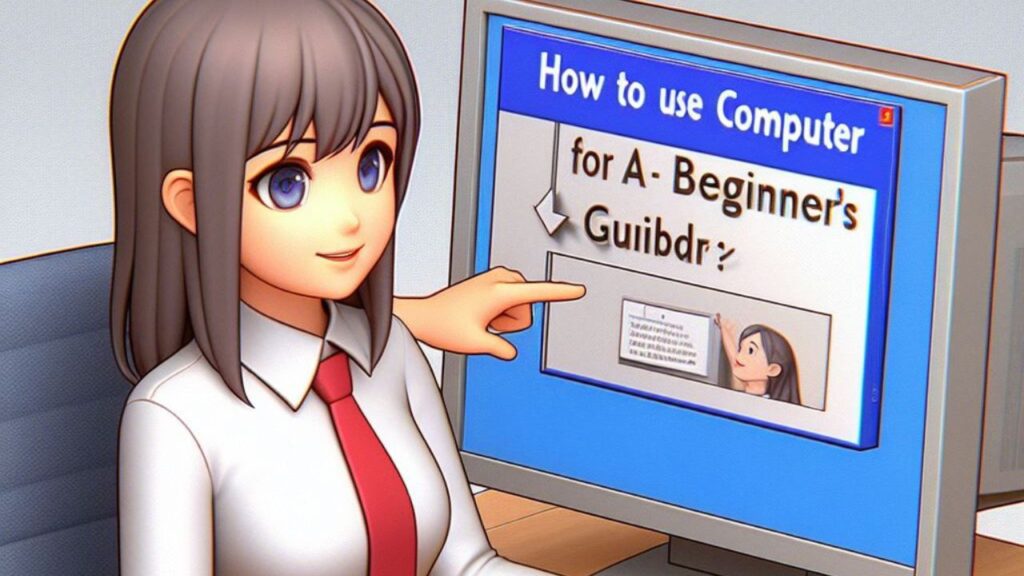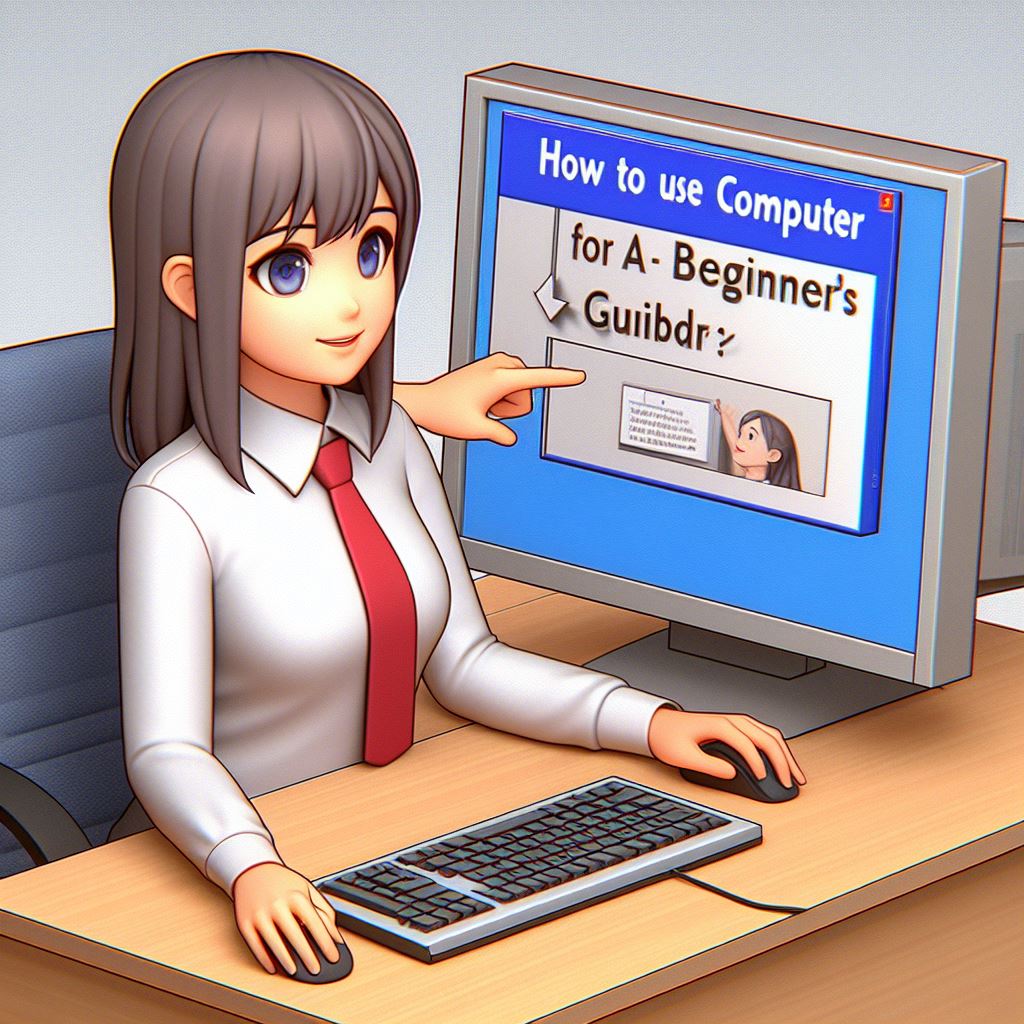
Tata Nexon EV Max: Unveiling the Long-Range Electric SUV | 0174
How to Get Started with a Computer: A Beginner’s Guide Well done on getting a new computer! Whether it’s a smooth PC or a strong work area, this machine opens ways to an immense universe of data, correspondence, and diversion. However, in the event that you’ve never utilized a PC, it can appear to be scaring. Dread not! This complete aide will walk you through the fundamentals, bit by bit, so you can become open to exploring the computerized scene.
Beginning: Power Up and Essential Components
- Turning it On: On your desktop computer or laptop, look for the power button, which is typically a circle with a line running through it. To start the machine, strongly press it in.
- The Boot Up: Your PC will go through a startup interaction called booting up. On the screen, you might see loading bars and logos. This can take anyplace from seconds to minutes, contingent upon your framework.
Meet Your Work area: The Desktop, Your Primary Workspace Upon booting, the desktop will greet you. Consider it your advanced work area. You’ll view this as:
- Icons: These are little pictures addressing projects, documents, and organizers. When you double-click an icon, the associated program or file opens.
- [Taskbar]: The taskbar, which can be found at the top of the screen on Mac or at the bottom of the screen on Windows, lets you switch between open programs. In Windows, you’ll likewise find the Beginning button, which gives admittance to every one of your projects and settings.
- Background: the image that appears on your desktop behind the rest. You can alter this however you would prefer.
Grasping the Equipment: Your Computerized Tools
A PC is comprised of different equipment parts that cooperate. We should investigate the basics:
- “Monitor”: This is your screen, showing all that you do on your PC. Work areas require a different screen, while PCs have an implicit one.
- Mouse (Work area) or Trackpad (Laptop): An arrow (or cursor) on the screen can be controlled with this pointing device. Tapping the mouse buttons permits you to choose things and perform activities. A PC’s trackpad works much the same way, utilizing your finger to move the cursor.
- Keyboard: This permits you to type text and enter orders. Find out about the console design, including keys for letters, numbers, images, and unique capabilities like Covers Lock and Ctrl.
“Mastering the Mouse” or “Mastering the Trackpad”:
Your primary method of computer interaction is the mouse (or trackpad). A quick guide is as follows:
Changing the Cursor: Slide your finger on the trackpad or move the mouse to control the on-screen cursor.
- Clicking: The left mouse button can be used to select an item or launch a program. Double-Clicking: * A file or folder can be opened by pressing the left button twice quickly.
- Right-Clicking: A context menu with additional options related to the selected item is displayed when you click this button.
- Dropping and dragging: Move the mouse to a new location while holding the click button on a desktop item, then release the button to move the item.
Exploring Envelopes and Records: How to Organize Your Digital Life * Folders: These behave like file organizers, permitting you to sort out your records (archives, pictures, music, and so on.) into classifications. You can make new envelopes, rename them, and move them around on your work area.

- Record Types: Various kinds of records are utilized for various purposes. Documents (.docx), images (.jpg,.png), and music (.mp3) are typical examples. The record expansion (the letters after the spot in the filename) demonstrates the document type.
Utilizing the Web: The internet is your gateway to the world. It provides a wealth of information, tools for communication, and entertainment. This is how to connect:
- Interfacing with Wi-Fi: Click on the Wi-Fi icon on your computer to connect. A rundown of accessible organizations will show up. Pick your organization and enter the secret key whenever required.
- Opening an Internet Browser: An internet browser is a program that permits you to get to sites. Google Chrome, Mozilla Firefox, and Microsoft Edge are popular web browsers. Track down the program symbol on your work area or taskbar and double tap to open it.
- Perusing Websites: Type the web address (URL) of a website you want to visit into the address bar, which is typically located at the top of the browser window. The website will load on your screen when you press Enter.
Investigating Projects and Applications: The Software That Makes It Work Programs, which are also referred to as applications (apps), are pieces of software that let you carry out particular operations on your computer. Some common types include:
Proceeded: How to Get Started with a Computer: A Fledgling’s Aide
Investigating Projects and Applications (continued):
- Web Browsers: As referenced already, internet browsers are fundamental for getting to the web and investigating sites. Word Processors: You can create and edit text documents like letters, reports, and stories with these programs. Google Docs and Microsoft Word are two popular choices.
- Spreadsheets: Programs like Microsoft Succeed or find out about Sheets empower you to coordinate information, perform computations, and make diagrams and charts.
- Show Software: Apparatuses like Microsoft PowerPoint or Google Slides assist you make introductions with slides, text, pictures, and recordings.
- Media Players: Programs like Windows Media Player or VLC Media Player permit you to play sound and video records on your PC.
- Photograph Editors: Tools for editing and manipulating photos are available in programs like GIMP and Adobe Photoshop.
- Games: From straightforward riddle games to complex experiences, an immense range of games are accessible for PCs, taking special care of all interests.
Remaining Safe On the web: Fundamental Security Tips
The web can be a superb asset, however it’s essential to know about likely dangers. The following are some basic security measures:
- Solid Passwords: For each of your online accounts, create strong, one-of-a-kind passwords. Don’t use any personal information or words that are easy to guess.
- Antivirus Software: Introduce and keep a legitimate antivirus program to safeguard your PC from infections and malware.
- Programming Updates: Routinely update your working framework (Windows, Macintosh, and so forth.) furthermore, programming applications to guarantee you have the most recent security patches.
- Phishing Scams: Be mindful of messages or sites that seem, by all accounts, to be from real organizations yet intend to take your own data. Try not to tap on dubious connections or connections.
- Online Privacy: Audit the protection settings on sites and virtual entertainment stages to control how your data is shared.
Making Your Computer Your Own: Making it Your Own
Your PC can be customized to suit your inclinations. It can be customized in the following ways:
- Change Wallpaper: To change the background image on your desktop, right-click on an empty area of the screen and select “Personalize” (Windows) or “System Preferences” (Mac).
- Icons for the desktop: On your desktop, you can arrange, add, or remove icons to make it easy to access programs and files you use frequently.
- Taskbar Settings: Right-click on the taskbar to tweak its appearance and usefulness. You can choose how and which icons are displayed.

Finding out More and Investigating Further:
The universe of PCs is huge and consistently developing. There are countless opportunities for learning and exploration as you become more familiar with the fundamentals. To assist you on your journey, here are some resources:
- Online Tutorials: Free online courses on a variety of computer skills, from basic navigation to specific software programs, are available on websites like Khan Academy, Coursera, and edX.
- PC Books and Magazines: Libraries and book shops offer assets customized to fledglings, giving bit by bit guides and clarifications.
- Tech Support: Most PC producers and programming organizations offer internet based help assets and instructional exercises.
- Ask a Friend: If you need assistance, don’t be afraid to ask a friend or family member who is familiar with computers. They can help you with specific tasks and answer your questions.
Conclusion:
Congrats on venturing out into the intriguing universe of PCs! You will acquire the self-assurance and skills necessary to effectively use this powerful tool by following these steps and exploring further. Keep in mind, careful discipline brings about promising results, so make sure to try and investigate. You will become more familiar with your computer’s capabilities the more you use it. You can enter a world of entertainment, communication, and information with a little patience and practice. Have fun coding.

